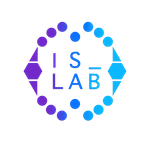VisioRed is a visualisation tool for assisting the user to understand a predictive maintenance model's prediction, by incorporating a set of modifications, recommendations, forecasters and interpretability options, as well as some additional functionalities towards prescriptive maintenance. VisioRed is available on GitHub and DockerHub.
SWRL2SPIN is a prototype tool built in SWI-Prolog that takes as input an OWL ontology with a SWRL rule base and transforms SWRL rules into SPIN rules in the same ontology, taking into consideration the object-oriented scent of SPIN, i.e. linking rules to the appropriate ontology classes as derived by analyzing the rule conditions. Furthermore, it optimizes the generated SPIN rules.
MEDical figure retrIEVAL, dubbed MEDIEVAL is a Web application where users can search for PubMED Central (PMC) figures by entering a text query to be matched against the caption of each figure. MEDIEVAL allows filtering the results by modality, by letting the users select the modalities they are interested in. Figures are sorted according to the similarity of their caption with the text query. Users can see the image and caption of each retrieved figure and navigate to the PMC article containing it.
Hatebusters is based on a European Union agreement with the four largest social network providers (YouTube, Facebook, Microsoft and Twitter) and also the efforts of the latter to control the content in their platforms, so as to abide by Terms of Use. According to the agreement of the aforementioned, any content which is reported has to be reviewed by their moderation teams within 24 hours. Hatebusters is trying to achieve a gamification of the reporting process, by predicting comments' hate score and prompting users with the most hateful ones.
DEiXTo (or ΔEiXTo) is a powerful web data extraction tool that is based on the W3C Document Object Model (DOM). It allows users to create highly accurate "extraction rules" (wrappers) that describe what pieces of data to scrape from a web page. DEiXTo consists of two separate, standalone components:
- GUI DEiXTo, an MS Windows™ application implementing a graphical user interface that is used to manage extraction rules (build, test, fine-tune, save and modify), and
- DEiXTo Executor, a stand-alone extraction rule executor (command line utility) that massively and automatically applies extraction rules on targeted HTML pages and produces structured output in a variety of formats.
DEiXTo can contend with a wide range of web sites with high precision and recall, since it provides the user with an arsenal of features aiming at the construction of well-engineered extraction rules. Wrappers built with GUI DEiXTo can be scheduled to run automatically providing periodic and automated access to resources of interest, saving users a lot of time, energy and repetitive effort.
DLEJena is a Java library that implements the OWL 2 RL/RDF rules using template rules based on the Jena Rete-based rule engine and on the Pellet DL reasoner. The Pellet DL reasoner is used to perform TBox reasoning over the loaded ontologies, whereas the forwardRete rule engine of Jena is used to apply an instantiated version of ABox-related rules. DLEJena is based on the DLE framework and it is capable of implementing an arbitrary number of ABox entailment rules based on the TBox inferencing capabilities of Pellet. The current distribution of DLEJena comes with a predefined set of 36 OWL 2 RL/RDF template rules that can be extended.
EMERALD is an implementation framework for interoperable reasoning among agents in the Semantic Web, by using third-party trusted reasoning services. The advantage is that every agent can exchange its position justification arguments with any other agent, without the need for all agents to conform to the same kind of rule paradigm or logic; the receiving agent can use an external reasoning service to grasp the semantics of the rule set, namely the set of the results of the rule set. EMERALD is built on-top of the JADE multi-agent system. In EMERALD, reasoning services are "wrapped" by an agent interface, called the Reasoner, allowing other Ias to contact them via ACL messages. The Reasoner can launch an associated reasoning engine, in order to perform inference and provide results.
OWLS-SLR (SLR stands for Structural and Logic-based Reasoning) is a semantic Web service matchmaker written in Java that makes use of OWL-S Profiles. It follows the abstract Web service discovery approach, performing matchmaking based on inputs, outputs and non-functional properties. The matchmaking algorithm exploits not only the ontology subsumption hierarchy, but also the structural knowledge of the domain ontologies, such as sibling relationships among concepts.
PORSCE II is comprised by a planning component, a concept relevance module for discovering similarities among OWL ontology concepts, a visual component, and a service replacement component, which cooperate to achieve the goal of automated semantic web service composition. The planning module is responsible for expressing the web service composition problem as a planning problem and exporting it to the standard language for planning domain and problem description, PDDL. In addition, it cooperates with independent external PDDL-compliant planning systems (LPG-td, JPlan), which search for composition plans by matching OWL-S profile input and output parameters, and evaluates the produced plans, in order to use this evaluation when assessing the quality of each complex service. The concept relevance module exploits knowledge obtained from reasoning over ontologies to semantically enhance the input and output requirements of the web services, by including semantically related ontology concepts based on different notions of concept similarity.
S2REd is a syntactic-semantic text-based RuleML editor. It is a full-fledged textual XML editor that features: syntax highlighting, spell checking, brace matching, code block coloring, pretty-printing, well-formedness & validation checking. Nevertheless, S2REd is more than an XML editor. Via its STM (Semantic Tag Mapping) window, the user can manually define the correspondence between the tags of the loaded vocabulary and the various concepts of the rule base. In essence, STM provides a meta-modeling facility for generating schemas over various RuleML language versions. In reality, the meta-model is a specification of a domain-specific modeling language.



